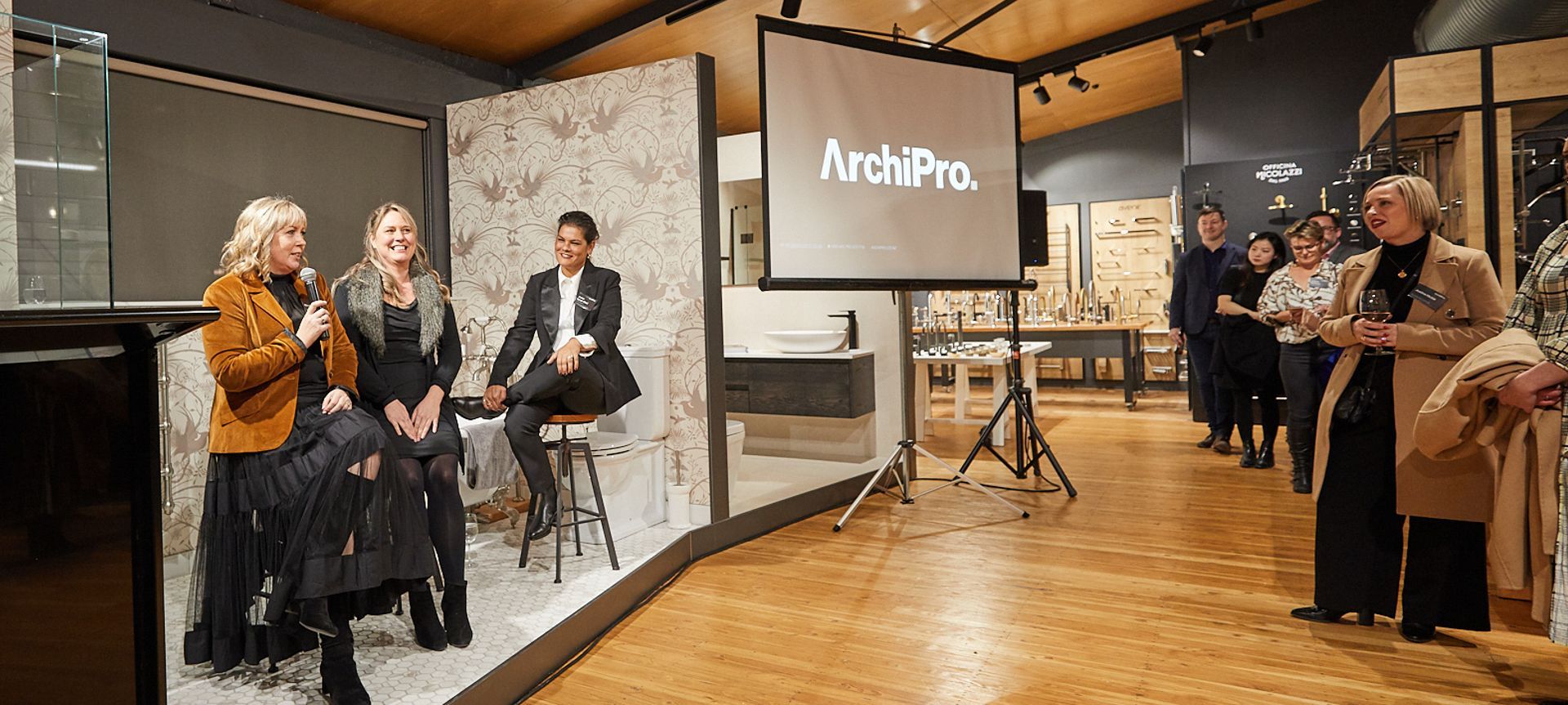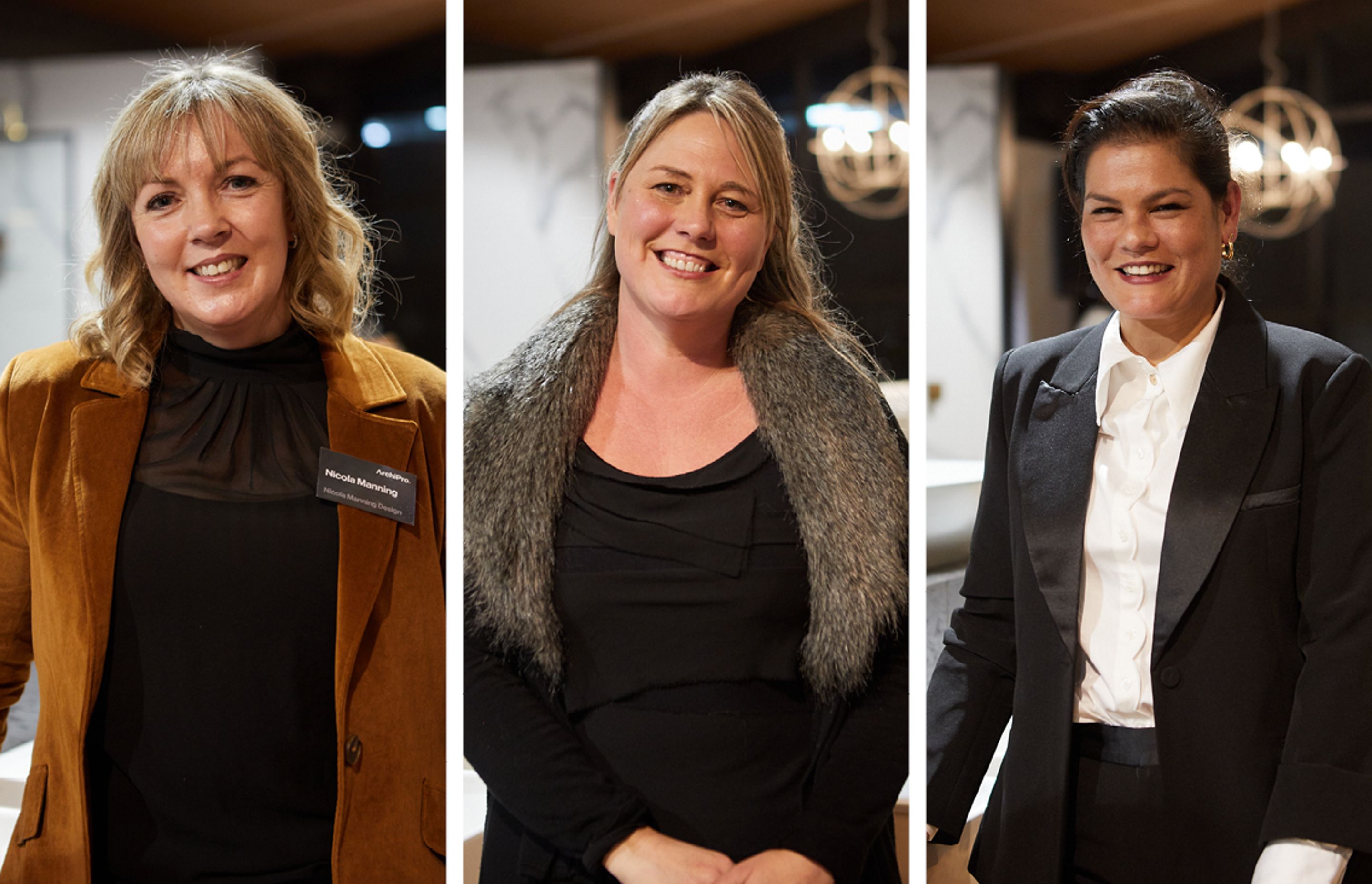The interior trends making a comeback
Written by
19 July 2021
•
10 min read

During the recent AP after five event held in conjunction with Plumbline, we were fortunate to host a panel discussion with three award-winning designers—Nicola Manning, Principal Designer, NM Design; Natalie Du Bois, Director, Du Bois Design; and Janice Kumar-Ward, Director, JK-W Interior Architecture and Design—and to get their insight into the latest trends in bathrooms and bathroom design, as well as a prediction of two for upcoming trends to keep an eye out for.
ArchiPro: Never say never... It seems that coloured bathroom suites are making a comeback and while it’s not the full avocado experience of the 70s, there are definite similarities. What is your opinion on this growing trend and would you encourage—or have you encouraged—a client to go ‘full colour’ in their bathroom?
Nicola Manning: I do draw the line at coloured toilets, I do quite like white toilets. Sometimes black toilets can work really well, as well, depending on the room. I’ve worked on too many jobs where we’ve taken out different coloured toilets from the 1970s to be too excited about that but I love coloured basins and baths and the different textures we're seeing.
Natalie Du Bois: Yeah, I’m pretty much the same, actually. The toilet thing is, I think, because we’ve grown up with really bad green and pink toilets, but I do think there is the right job for it. So, I don’t think it’s totally out of the equation but I do believe that I will sell more coloured basins and baths. As for the toilet thing, Nicola is absolutely right.
Janice Kumar-Ward: I don’t know, I think if colour blocking is right for the client and it’s right for the room, we should be experimenting, definitely, with colour and I think there is room for movement in that area and that colour blocking is definitely a thing. If a space needs to have something memorable about it and if that’s a coloured toilet, I’m sorry, I’m in.
AP: Alongside colour, what materials do you routinely incorporate into your bathroom designs?
NM: We’re using a lot of timber at the moment and natural materials, lots of stone. A really natural, organic palette.
NDB: I do have different clients, so I work with the individual client. I do have my preferred choices, which is similar to Nicola, I like natural materials. I think each home is different so I will choose what suits the client or the home. At the moment, there are way more natural materials and not as many glossy, fake-looking products, it’s more about going back to nature.
JK-W: Yes, I agree, there’s definitely a lot of natural products around. I think one of the big things for us lately is using more locally-sourced products, which has been kind of cool. And in the same respect using local makers to do some really different stuff—like the coloured concretes that are around—we can now get things made here that are pretty amazing so there are some pretty cool natural products happening right here in New Zealand. I also find there’s been a resurgence of beautiful paint surfaces and the use of recycled timbers and other materials that are already found in the house.

AP: A popular trend in interior design, particularly post-COVID, is biophilic design—in answer to our inherent need to experience and be at one with nature—are you seeing an increase in clients wanting to incorporate biophilia into their homes and if so, how are you incorporating that throughout those spaces?
NM: I don’t think that people are specifically asking for that in those words, but people really are wanting a real retreat and a real sensory experience in the bathroom. A sense of relaxation, of really treating themselves, so things like greenery and natural products and organic shapes really help to bring that sense through to the bathroom.
NDB: Clients are more aware, through what they’re seeing online and in magazines, that there are more natural elements out there. We’re working on a project at the moment where we are incorporating a little courtyard with a tree, so there definitely is this wanting to be one with nature. Definitely bathrooms where we can retreat and feel calm and plants and the outdoors make us feel calm, especially in these times.
JK-W: We worked on quite a cool project a few years ago where we incorporated a skylight over the shower and it was a huge success and something we’ve used several times since. In terms of plants in homes and bathrooms, I always ask my clients: ‘do you know how to look after them properly, because they will die’. It’s a really big thing because you do actually have to look after your plants.
AP: Should a bathroom be a continuation of the home’s overall design scheme or is it an opportunity to go ‘off brief’? What has been your biggest success when you have gone off brief?
NM: I don’t like going off brief because I feel the brief is really really important but I definitely think the bathroom should sit in the whole house and be part of that and that the spaces should flow beautifully. With something like a powder room you can really push the boundaries a little bit and do something more intense with beautiful wall paper and lighting, so you can definitely push things.
NDB: I think the brief from the client is extremely important and that you actually speak to what the client needs and is going to feel happy with but one example I have is where I did a bathroom for a client in Titirangi. She wanted a black and white bathroom and after a couple of meetings with her I realised that she wasn’t a black and white person. Every time I saw her she was wearing really vibrant clothing and nothing in her wardrobe was black and white. So I did kind of ask her several pointed questions about what appealed to her and what she needed from this because the black and white thing just did not suit her personality. In the end the bathroom ended up with a green ceiling and walls and a black bath, which was not what she had expected at all so I did go off brief but in the end she was absolutely blown away and it did work successfully for her. Going outside the brief sometimes does work but you need to know who your client is.
JK-W: Sometimes, going off brief, for us, means a floor plan change, which comes from behind and surprises the client a little bit, so it won’t necessarily be the finishes that we go off brief on because I believe they are what the clients hold dear to them. As far as bathroom design is concerned I believe it’s really versatile so I don’t tend to dictate to the client what they should have but rather invite them to the showroom and get them really involved in it.
I definitely think it’s all about finishes and creating memorable spaces that are special in all the right places.
AP: They say that small spaces often offer the greatest design opportunities. What’s your secret to designing small-scale bathrooms?
NM: One of my favourite parts of my job as a designer is problem solving and taking the client’s wish list and fitting as much of that into the space. It’s really challenging. Storage is incredibly important in a small space and thinking really really carefully about the placement of the different areas and functions of the bathroom and making sure they function really well.
NDB: Most bathrooms are small and as bathroom designers we need to really think about those spaces quite a bit. Everyone is fixated on storage so what I try and do with a small bathroom is steal little areas from other rooms, potentially from something such as moving a wall in a wardrobe and getting storage space out of a wall cavity. I also tend to play around with material sizing as well because if you do everything mini then it will tend to look and feel claustrophobic.
JK-W: I definitely think it’s all about finishes and creating memorable spaces that are special in all the right places. It’s got to act like a boat, with all these little nooks and crannies where you didn’t think that things could be and they might be.
AP: Along with coloured bathroom suites, what trends do you think we will see in bathroom design in the next 12 months?
NM: I think the things that we’ve touched on with natural materials and the sensory experience including incorporating sound systems into the bathroom and just luxury generally. I think people are expecting more from their bathroom spaces then they used to and wanting a lot more luxury.
NDB: Because people are staying at home all the time, their homes are so important and people are investing a lot more time thinking about their bathrooms and wanting them to be somewhere where they feel comfortable being in, so I think people are going to want to have more timeless products—really good, practical, easy maintenance products. People are thinking about longevity and comfort, so anything that can suit being comfortable and durable and enjoyable—that’s what they want out of their bathrooms.
JK-W: From a trends point of view, we try to push people a bit further out of their comfort zones but I think the major trend is: “I want it and I want it now but I’ll wait 14 weeks for the really beautiful bath I want.” Everyone is wanting timelessness and quality but they want it now. From a finishes point of view, metal finishes have had this major resurgence so it’s trying to get people to try to think about how you mix metals because not every product is available in every single finish at the moment and also in a small space if you use all aged-brass, for example, it ends up looking like a christmas tree. So there’s a bit of negotiation around getting people to think outside the ‘trends’ square.
AP: Is there a ‘must-have’ bathroom product that you’re aware of that’s about to burst onto the design scene?
NM: There are some pretty smart toilets around at the moment that people are quite interested in. I also think that lighting is hugely important, along with other technologies such as sound systems, as I mentioned before and is something that I think we can develop a lot further.
NDB: I agree about the bidet toilet. I went to Japan about five years ago and a friend of mine convinced me to try one and it was the most amazing thing. They are really hygienic and environmentally friendly, so if people know about the toilet they may buy it.
JK-W: Kim (Leonard) and I have searched the earth for undermount baths and it’s not even a thing here. You see them all over Pinterest but no one is doing them here. Why? It’s a building code thing but I believe they will be the next big thing.